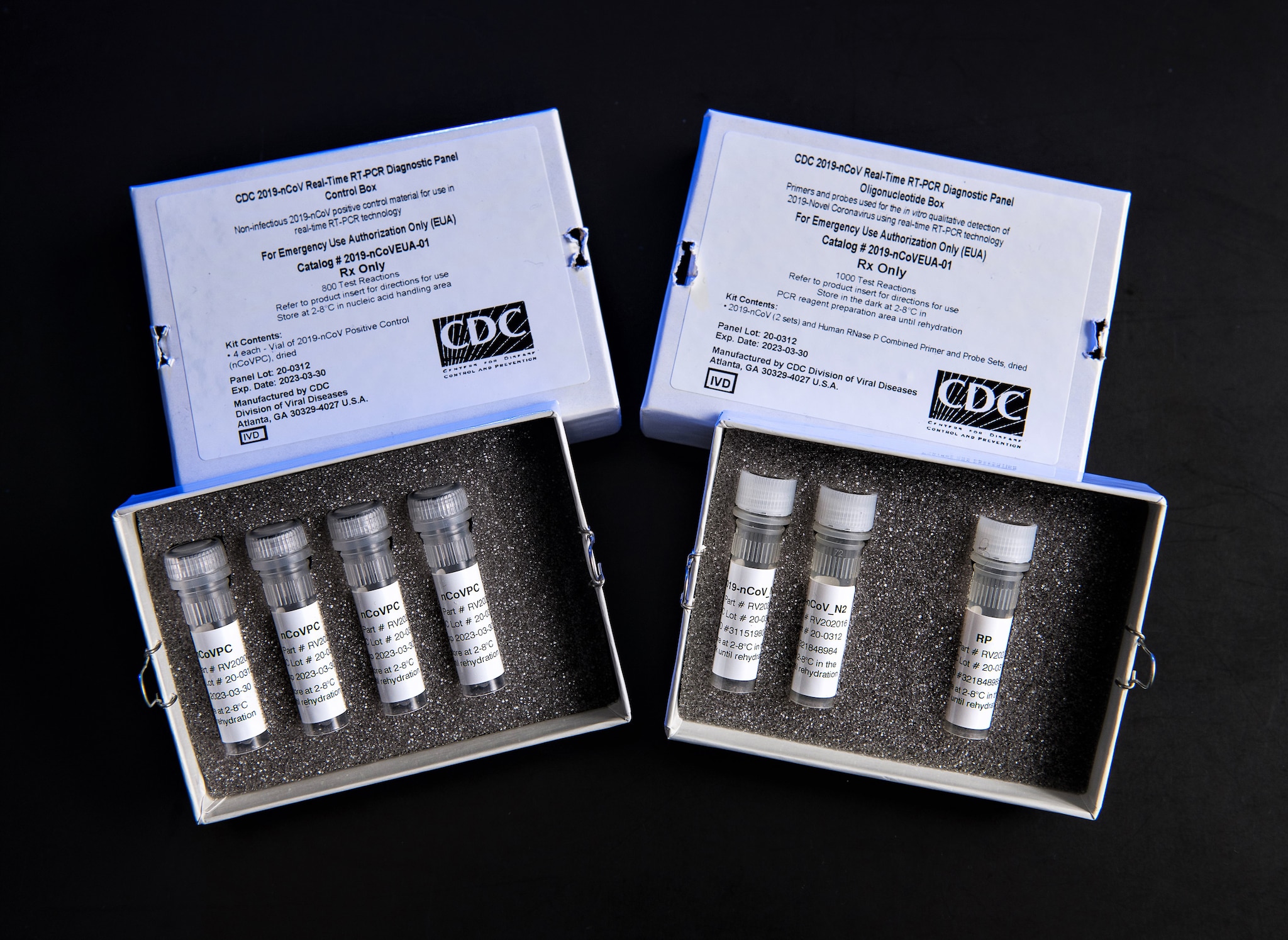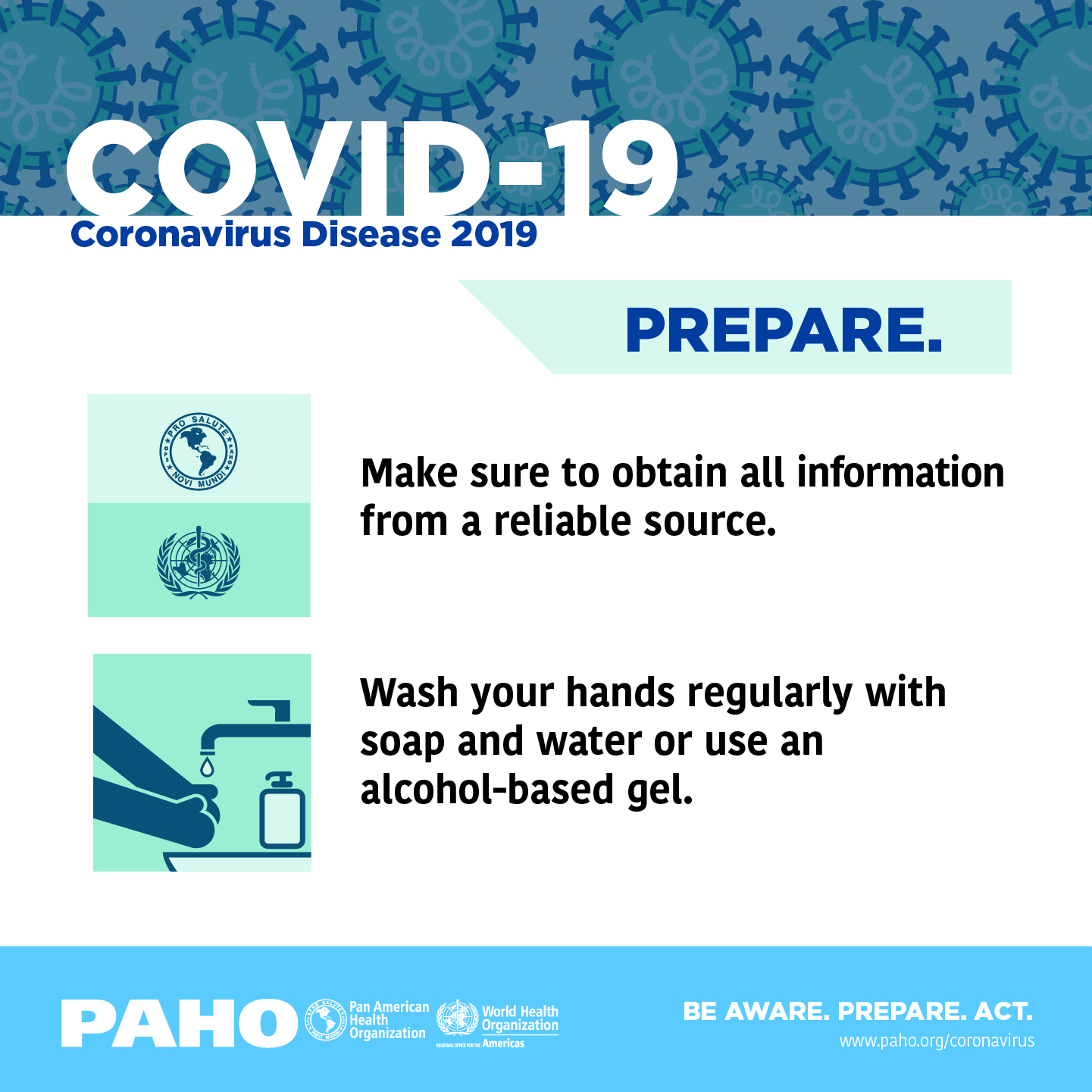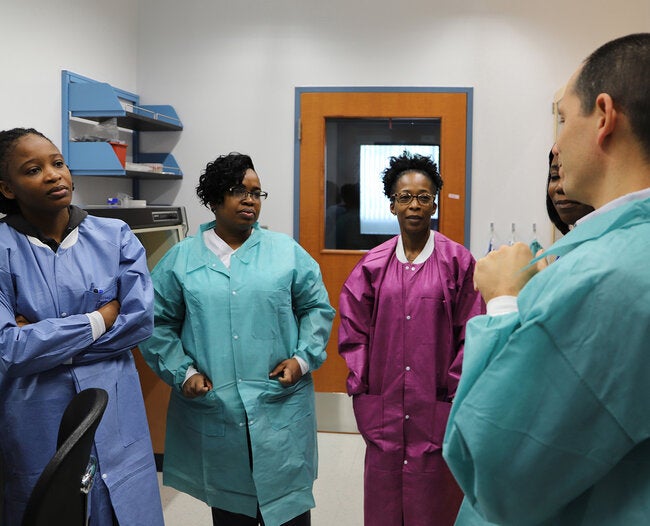Coronavirus disease (COVID-19) is an infectious disease caused by a newly discovered coronavirus. Most people infected with the COVID-19 virus will experience mild to moderate respiratory illness and recover without requiring special treatment. Older people, and those with underlying medical problems like cardiovascular disease, diabetes, chronic respiratory disease, and cancer are more likely to develop serious illness. The best way to prevent and slow down transmission is be well informed about the COVID-19 virus, the disease it causes and how it spreads. Protect yourself and others from infection by washing your hands or using an alcohol based rub frequently and not touching your face.
The COVID-19 virus spreads primarily through droplets of saliva or discharge from the nose when an infected person coughs or sneezes, so it’s important that you also practice respiratory etiquette (for example, by coughing into a flexed elbow)...Read more
The COVID-19 virus spreads primarily through droplets of saliva or discharge from the nose when an infected person coughs or sneezes, so it’s important that you also practice respiratory etiquette (for example, by coughing into a flexed elbow)...Read more
Interesting Facts
Scientists in Iceland claim they have found FORTY mutations of the coronavirus. Viruses accumulate mutations as they evolve, which may or may not cause them to behave in different ways. Mutating is a biological process which would have allowed the virus to attack the human body in the first place. Scientists believe the infection lurked in animals for years, perhaps even decades, before it gained the ability to jump to humans. Studying viruses using genomics helps to understand how they behave, which will help scientists fight the spiralling pandemic. Icelandic scientists investigated the virus within their own country, where one death has been reported.
The Icelandic health authorities, along with genetics firm DeCode Genetics, tested 9,768 people for coronavirus, Information reports.This included anyone who had been diagnosed, as well as people with symptoms or those in high risk groups for the coronavirus. Some 5,000 volunteers who did not have any symptoms stepped forward to join the study – 48 of whom actually tested positive.
Complete genome sequencing was performed, which revealed clues about how the virus has evolved and the chain of transmission. 'We can see how viruses mutate,' said Kári Stefánsson, director of DeCode Genetics. 'We have found 40 island-specific virus mutations...Read more
How Tech Is Being Used to Track and Respond to Viral Outbreaks. As the COVID-19 virus spreads in the U.S. and around the world, sophisticated geographic information systems are being used to monitor its progress and provide real-time information to medical institutions and the public.
When it comes to diseases, the whole question gets trickier. It would be a lot easier to track chronic disease than infectious disease, because infectious disease is fast-moving and you need real-time or near-real-time data. That’s why I think this [tracking of coronavirus] is so significant. It’s the first time I’ve seen an infectious disease tracked on a large scale before. Johns Hopkins started off with Google docs, where they collected and uploaded data from the WHO and the CDC, as well as the Chinese organization DXY and the European Centre for Disease Prevention and Control [ECDC]. And then they used that data to populate their dashboards, which were refreshed a couple times per day.
 |
| Johns Hopkins |
Once their dashboards started getting a lot of hits, our company contacted them and assisted with a few cartography tweaks to help out. It was [also a matter of automating] the data process. In any system, it’s ideal if you can connect directly to [the data source] and let the computer do the update work for you. You have all of these entities that have data to share and you want to combine them into one data resource. The amount of data that’s being shared publicly is far beyond what I’ve ever seen before. I’ve seen tracking of ebola and Zika virus at an international scale — but it was not nearly as fast moving as this, nor was it updated as often as we’re seeing with coronavirus. Also, what I’ve seen previously has been webmaps. I think map-centric dashboarding provides even more information. That’s also new at this scale...Read more
Policy Developments and Outlook
Case detection, priority in strategy against covid-19. Specifically, the Ministry, according to the recommendations of the Colombian Association of Infectious Diseases (Acin) and the Institute for Technology Assessment (IETS), will begin to screen the population with rapid molecular tests that allow the detection of components (viral antigens) of the new coronavirus. and thus to be able to make deep analyzes to the suspected cases. "As of April 1, Colombia will have at least 350,000 weekly tests thanks to the management carried out by the Ministry of Health," said the Minister of Health, Fernando Ruiz Gómez.

Gomez emphasized that these are not diagnostic tests but screening tests. In other words, "they allow the optimization of resources, helping health professionals to make decisions regarding isolation, carrying out confirmatory diagnostic tests and treatment."
With this, the Ministry explains, it will be possible to indicate a possible recent or ongoing infection, since they are much more effective in ruling out negative cases... Read more

Gomez emphasized that these are not diagnostic tests but screening tests. In other words, "they allow the optimization of resources, helping health professionals to make decisions regarding isolation, carrying out confirmatory diagnostic tests and treatment."
With this, the Ministry explains, it will be possible to indicate a possible recent or ongoing infection, since they are much more effective in ruling out negative cases... Read more
Coronavirus: the advantages of Latin America to combat the pandemic. "We can have a more terrifying scenario than that of Italy," alerts (Miguel Lago). But beyond the deficiencies of the health systems and the inequities, Latin America also has advantages to face the crisis and make the impact less than in other parts of the world.
 Time and distance - Latin America and Africa were the regions where the coronavirus later arrived, which originated in China and from there spread to Asia and later to Europe and the United States, the areas most affected by the outbreak in this moment. The distance of Latin America from Asia and Europe, from which separate oceans separate it, allowed us to save time. The containment experiences taken by China and Europe served to take precautionary measures much earlier than it took to reach Italy and Spain, countries that were more surprised by the exponential increase in cases.
Time and distance - Latin America and Africa were the regions where the coronavirus later arrived, which originated in China and from there spread to Asia and later to Europe and the United States, the areas most affected by the outbreak in this moment. The distance of Latin America from Asia and Europe, from which separate oceans separate it, allowed us to save time. The containment experiences taken by China and Europe served to take precautionary measures much earlier than it took to reach Italy and Spain, countries that were more surprised by the exponential increase in cases.
Experience with infectious diseases - Unlike Europe, Latin America itself is used to dealing with infectious diseases. The region "has extensive experience in managing outbreaks and pandemics, such as H1N1 in 2009 and Zika 4-5 years ago," recalls Espinal. "Latin America has learned from those lessons and the countries are a little better prepared than before those epidemics," he adds. For example, when controlling entry points to countries, such as airports, and having isolation units and laboratories ready...Read more
 |
| ONU |
Video: The Impact of the Coronavirus on Latin America and the Caribbean. The World Bank's Amparo Elena Gordillo-Tobar said that about one third of the economic losses from the coronavirus will come from loss of life and workplace closures, while the remaining losses will come from economic uncertainty.
It’s too early to assess and understand the complete impact of pandemic on the world economy because we don’t know the duration of the pandemic, said Ines Bustillo of ECLAC, adding that COVID-19 is different because it’s both a supply and a demand shock. Bustillo explained that countries that have already been applying fiscal restrictions now face a dilemma with their macroeconomic policy to deal with their response to the virus, which is causing currency devaluations throughout the region.
Asked by moderator Eric Farnsworth for final recommendations for regional governments, panelists said to create partnerships, protect health workers, look for long-term sustainable solutions, “flatten the curve,” and look out for the most vulnerable...Read more






